Good day dear community, I hope you are all doing well and you had a weekend that brought some positive experiences into your life! In my new post, I would like to address an interesting topic and hope you will be able to learn new things.
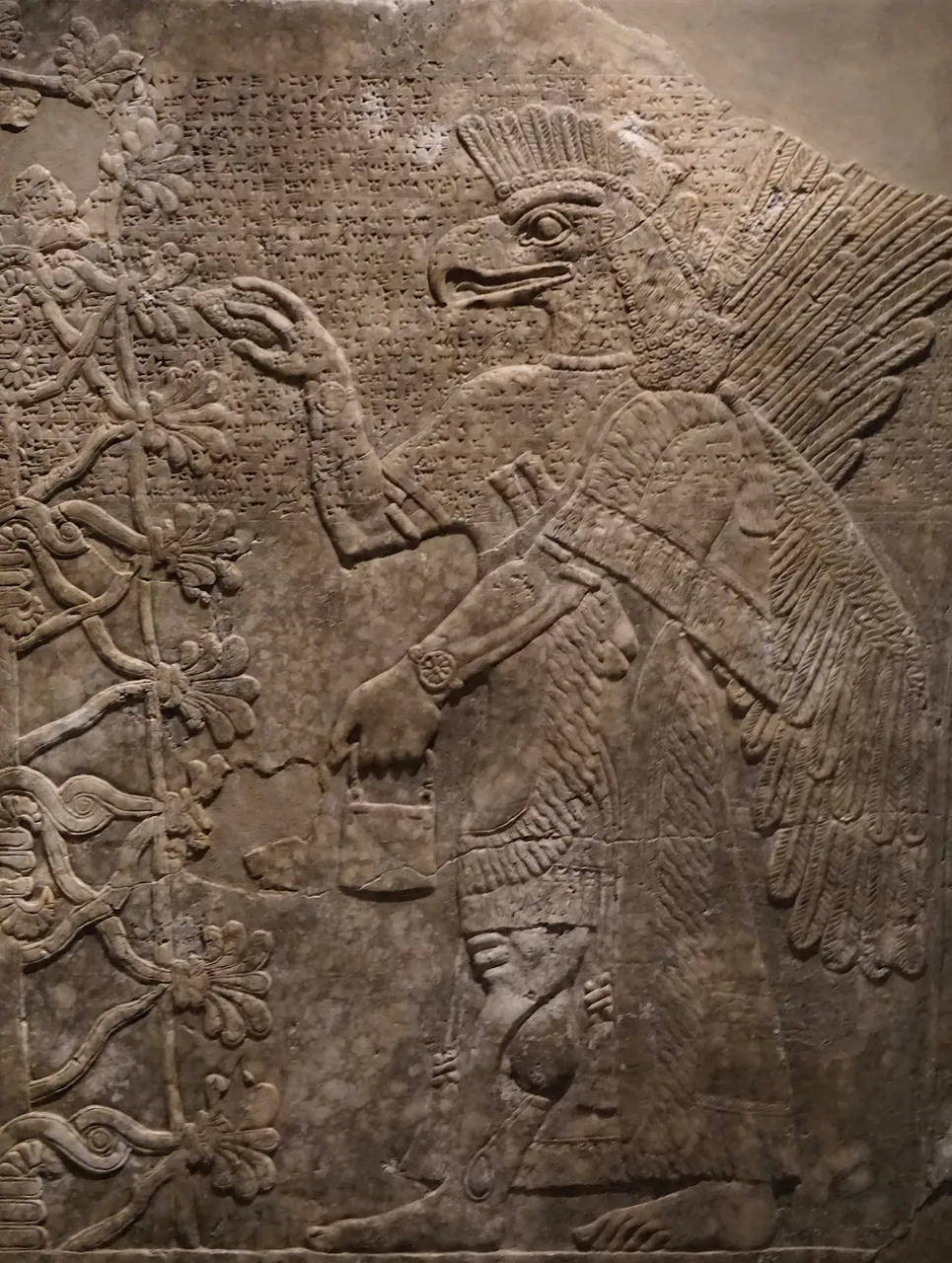
Some time ago I had the opportunity to photograph some old Assyrian reliefs which are probably from the 9th century BC and the place of origin is probably the former capital of the Assyrian empire Nimrud. These figures have both a symbolic and religious background and these works of art were probably made of the material gypsum and originally served as protection of palaces and the scenes depicted there have an important cultural background and are rich in different symbolism. In the first relief you can see a scene in which the sacred tree was probably pollinated and the figure carries in his hands a cone which was also used as a pollinator and this figure is somewhat reminiscent of a mixed being from a human with wings and the head of an eagle. These figures were also revered as supernatural beings and presumably they could also be gods who are depicted on the reliefs and often it was associated with the Apkallu who are also known as seven gods of wisdom who had mystical powers and were considered carriers of secret knowledge and each of the seven had a unique ability. The representation with the bucket and cone is known worldwide and in the bucket there is probably a liquid in which the pine cones have been dipped and here there are views that it could be water or other liquids.
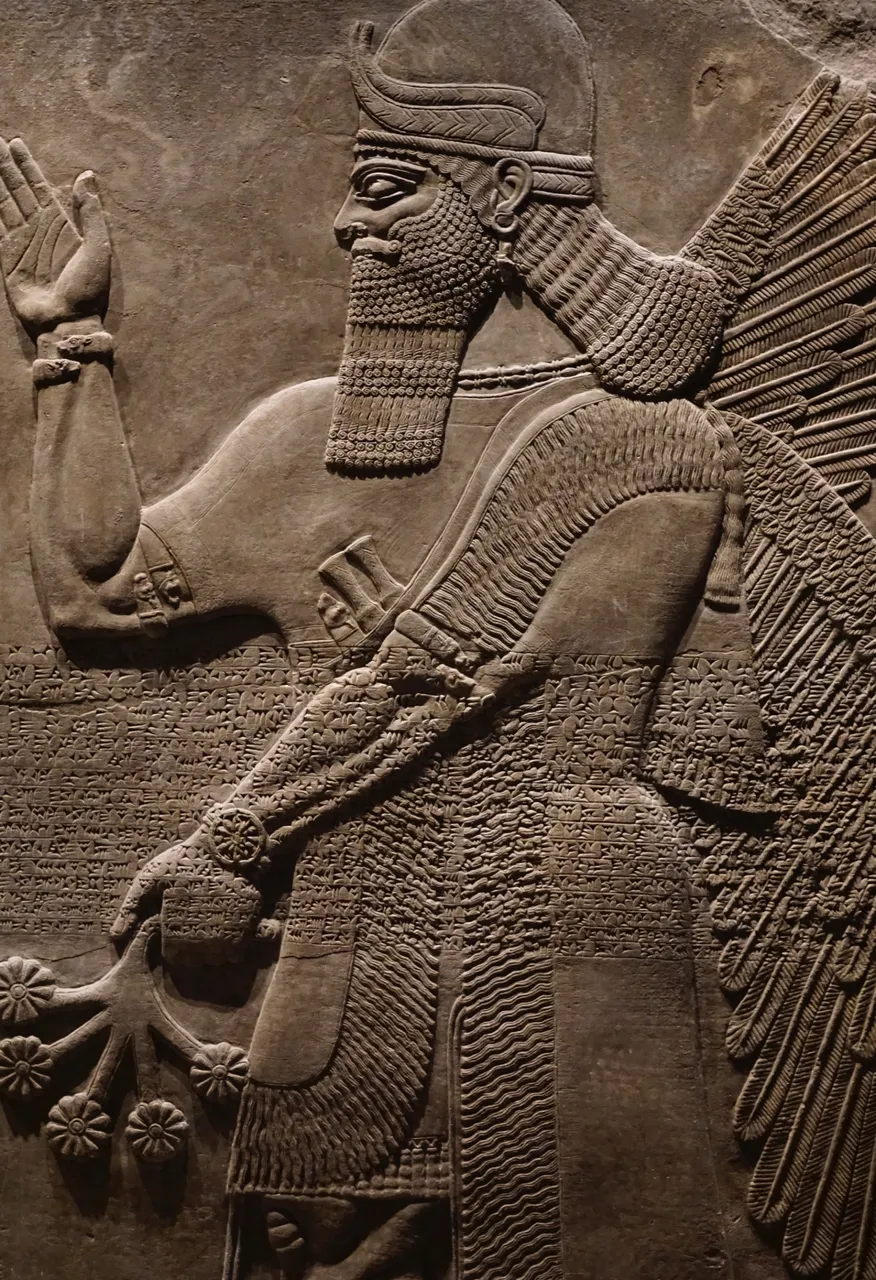
These objects should also be used to purify or bless things and in general the pine cone was also used in Ancient Mesopotamia as a symbol of regeneration or eternal life and has gained an important meaning in art or mythology and it is also often considered as a symbol for the pineal gland or the third eye which has also been associated with sacred geometry with the supernatural Fibonacci sequence. With high probability it was also associated with fertility among the Assyrians and was also associated with supernatural knowledge or enlightenment and the pine cone also appears in many other cultures and was associated as a mystical symbol with immortality as well as the divine or a connection between these two things. The representation together were also associated with twin characteristics and these reliefs probably originally come from the collection of the Wittelsbachs and were bought by the former King Ludwig I (1786 - 1868) who knew someone who was involved in excavations in this area and subsequently bought these mystical reliefs. These reliefs are a good example of the mystical aspects of these ancient culture and I find it interesting how mythology and symbolism are combined here.
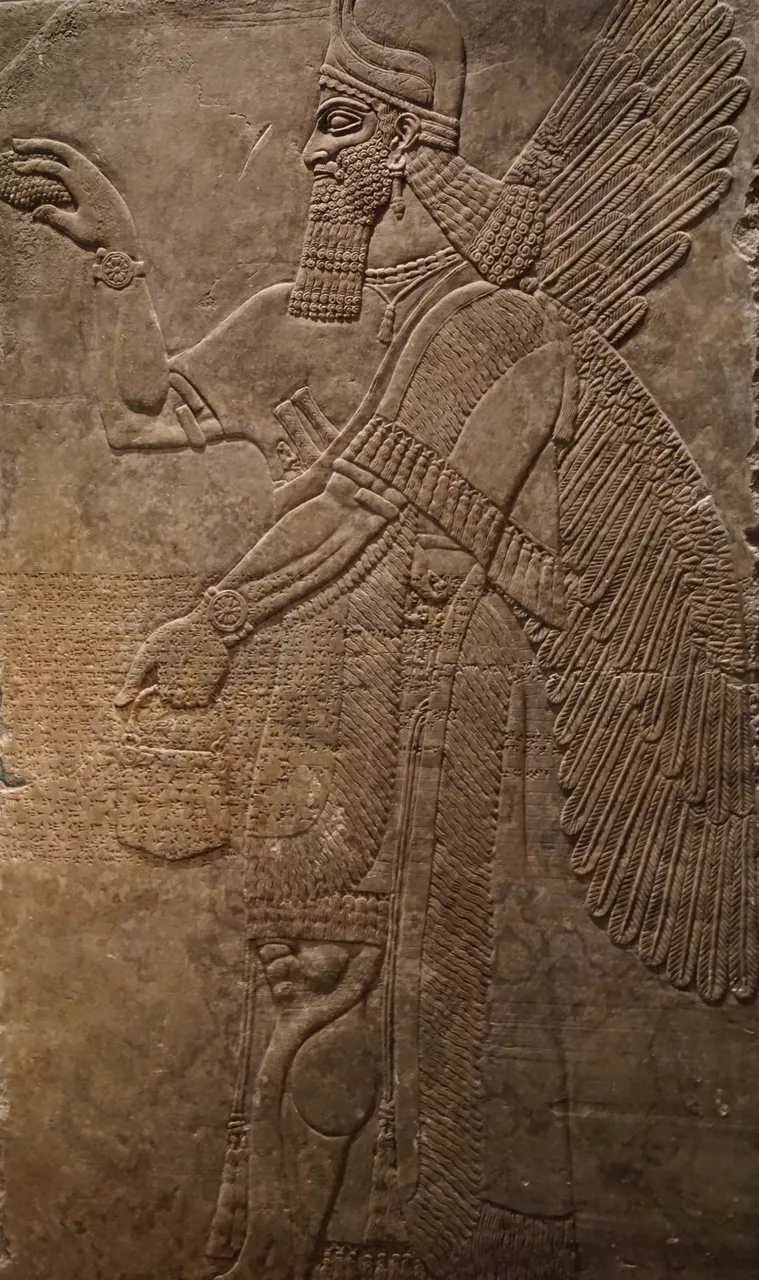
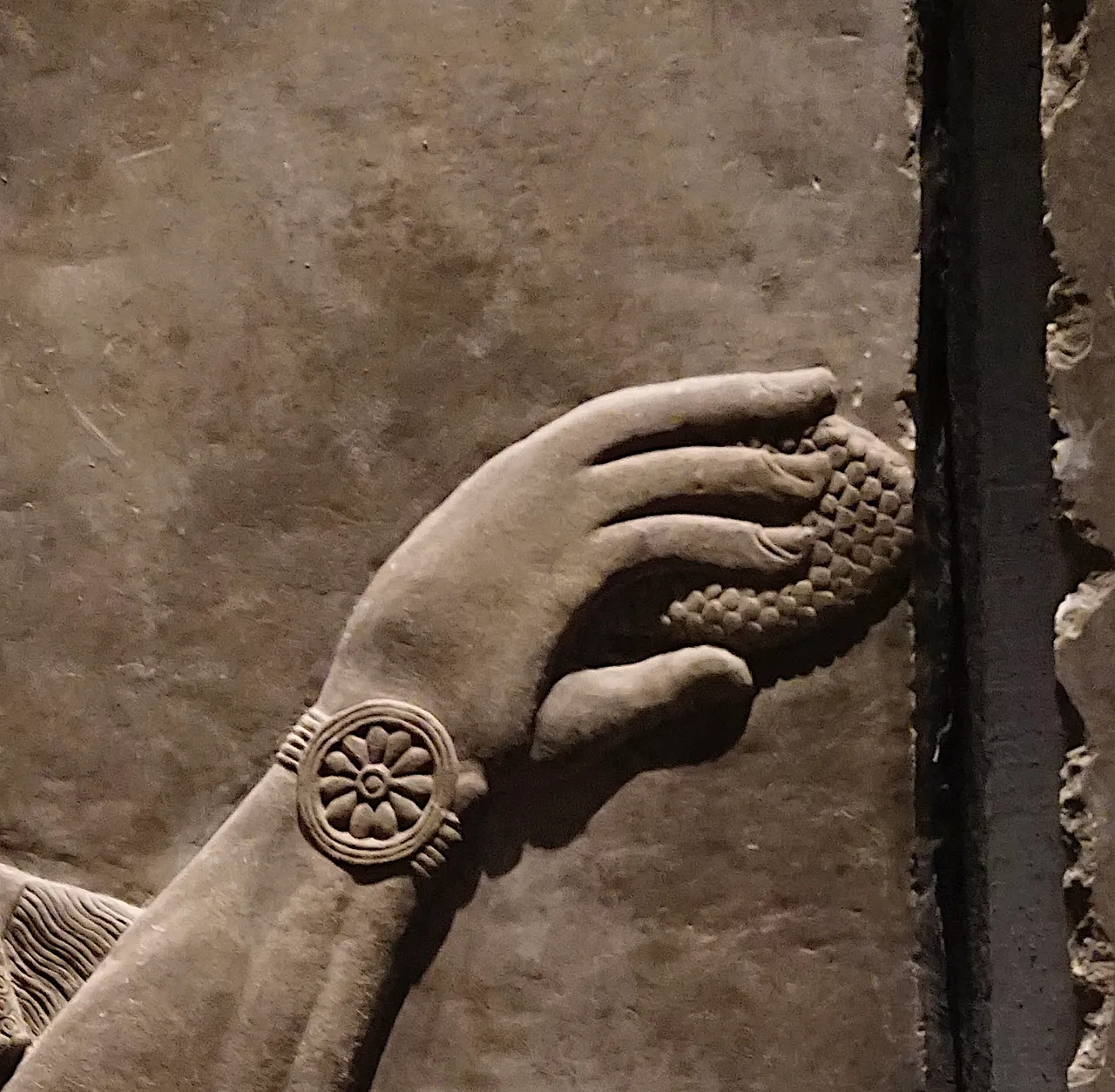
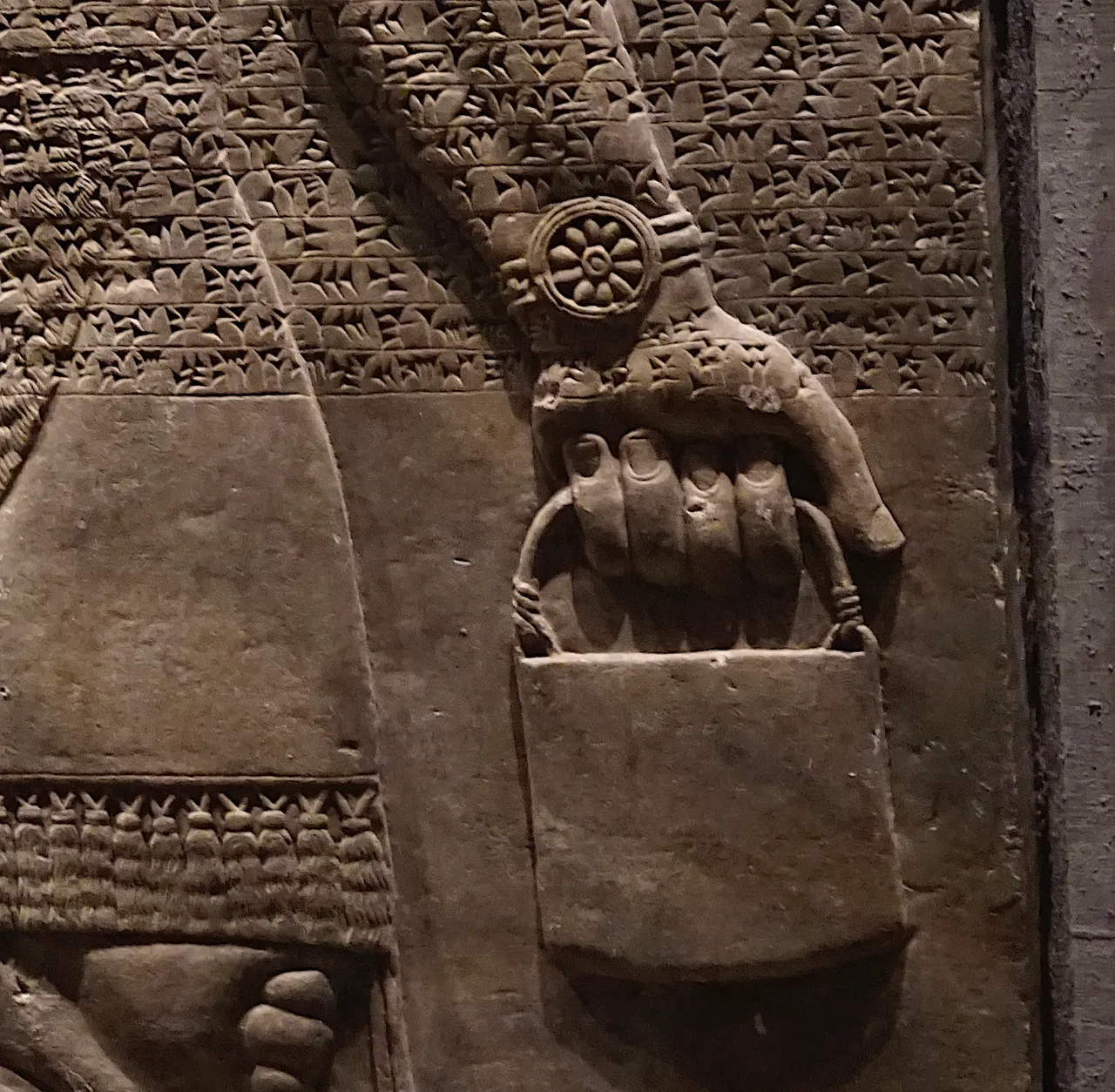
Thanks a lot for stopping by and I hope you could learn something new about this exciting topic! I captured these pictures with my Camera Sony Alpha 6000 plus 55-210 mm lens.